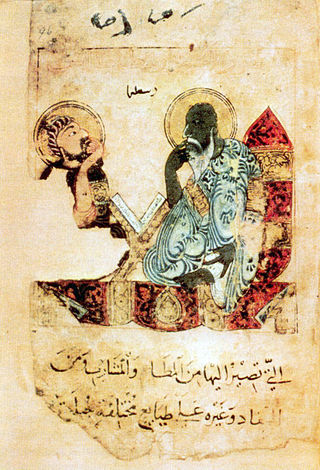New works
| Medieval and Renaissance literature |
|---|
| Early medieval |
| Medieval |
By century |
| European Renaissance |
- 1000
- Al-Tasrif (كتاب التصريف لمن عجز عن التأليف The Method of Medicine), by Abu al-Qasim al-Zahrawi (Abulcasis)
- The Remaining Signs of Past Centuries (کتاب الآثار الباقية عن القرون الخالية Kitāb al-āthār al-bāqiyah `an al-qurūn al-khāliyah), by Abū Rayḥān al-Bīrūnī
- c. 1000 – The Battle of Maldon (Old English) [4]
- c. 1008–10 – The Diary of Lady Murasaki (紫式部日記 Murasaki Shikibu Nikki), by Murasaki Shikibu (in kana script)
- 1010: March 8 (completed) – Shahnameh by Ferdowsi
- 1011 – Manual (Enchiridion) by Byrhtferth of Ramsey Abbey
- 1012–18 – Chronicon Thietmari by Thietmar of Merseburg
- By 1018 – Confessio Theologica by John of Fécamp
- 1019 – Legenda Sancti Goeznovii by 'William'
- By 1021 – The Tale of Genji (源氏物語 Genji monogatari), by Murasaki Shikibu
- 1021 – Book of Optics by Alhazen
- 1025 – The Canon of Medicine by Avicenna
- 1027 – The Book of Healing by Avicenna
- 1026–46 – Historiarum libri quinque ab anno incarnationis DCCCC usque ad annum MXLIV (History in five books from AD 900–1044) by Rodulfus Glaber
- c. 1040–44 – Wujing Zongyao (武經總要, "Collection of the Most Important Military Techniques") by Zeng Gongliang, Ding Du, Yang Weide and others
- c. 1040–53 – Mukhtar al-hikam wa mahasin al-kalim (Choice Maxims and Finest Sayings), by al-Mubashshir ibn Fatiq
- 1041–42 – Encomium Emmae Reginae probably by a Flemish monk of the Abbey of Saint Bertin, Saint-Omer
- Mid-11th century – Sponsus
- After c. 1040 – Le Chanson de Roland (The Song of Roland), original version, perhaps by Turold
- c. 1049 – Chronicle of Nantes (Chronicon Namnetense) concludes
- c. 1054–76 – Cançó de Santa Fe by an anonymous clerk in a Catalan dialect of Old Occitan
- After 1056 – Liber precum variarum by John of Fécamp
- 1064 – Liniantu (歷年圖 "Chart of Successive Years") by Sima Guang
- 1066 – by Sima Guang
- 1070 – Kutadgu Bilig (The Wisdom Which Brings Good Fortune), by Yusuf Khass Hajib of Balasagun in the Kara-Khanid Khanate (Uyghur language)
- c. 1070 – Hamamatsu Chūnagon Monogatari (浜松中納言物語), attributed to Takasue's Daughter
- c. 1070 – Kathāsaritsāgara by Somadeva
- 1073–76 – Gesta Hammaburgensis ecclesiae pontificum by Adam of Bremen
- c. 1075 – Vita sancta Servatii and Miracula sancta Servatii (life and miracles of Saint Servatius) by Jocundus
- 1077 – Monologion (Monologue) by Anselm
- 1077–78 – Proslogion (Address) by Anselm
- 1084 – Zizhi Tongjian (資治通鑑; Comprehensive Mirror to Aid in Government) by Sima Guang
- 1086 – Domesday Book
- c. 1087 – Almanac by Abū Ishāq Ibrāhīm al-Zarqālī (Arzachel)
- 1088 – Dream Pool Essays (夢溪筆談, Mèng Xī Bǐ Tán) by Shen Kuo
- 1098 – Elucidarium by Honorius Augustodunensis
- Late 11th century
- The Incoherence of the Philosophers (تهافت الفلاسفة, Tahāfut al-Falāsifaʰ) by Al-Ghazali
- Lebor Gabála Érenn
- Siyasatnama (سياست نامه) by Nizam al-Mulk (Persian)
- 11th or 12th century – Betha Meic Creiche (Life of Mac Creiche, in Middle Irish)
- c. 11th century – The Records of Origin on Things and Affairs (事物纪原), by Gao Cheng
- Heian period
- Sarashina Nikki (更級日記, a travel diary) by Takasue's Daughter
- Yoru no Nezame (夜の寝覚, Wakefulness at Night), attributed to Takasue's Daughter, but perhaps written after 1086






